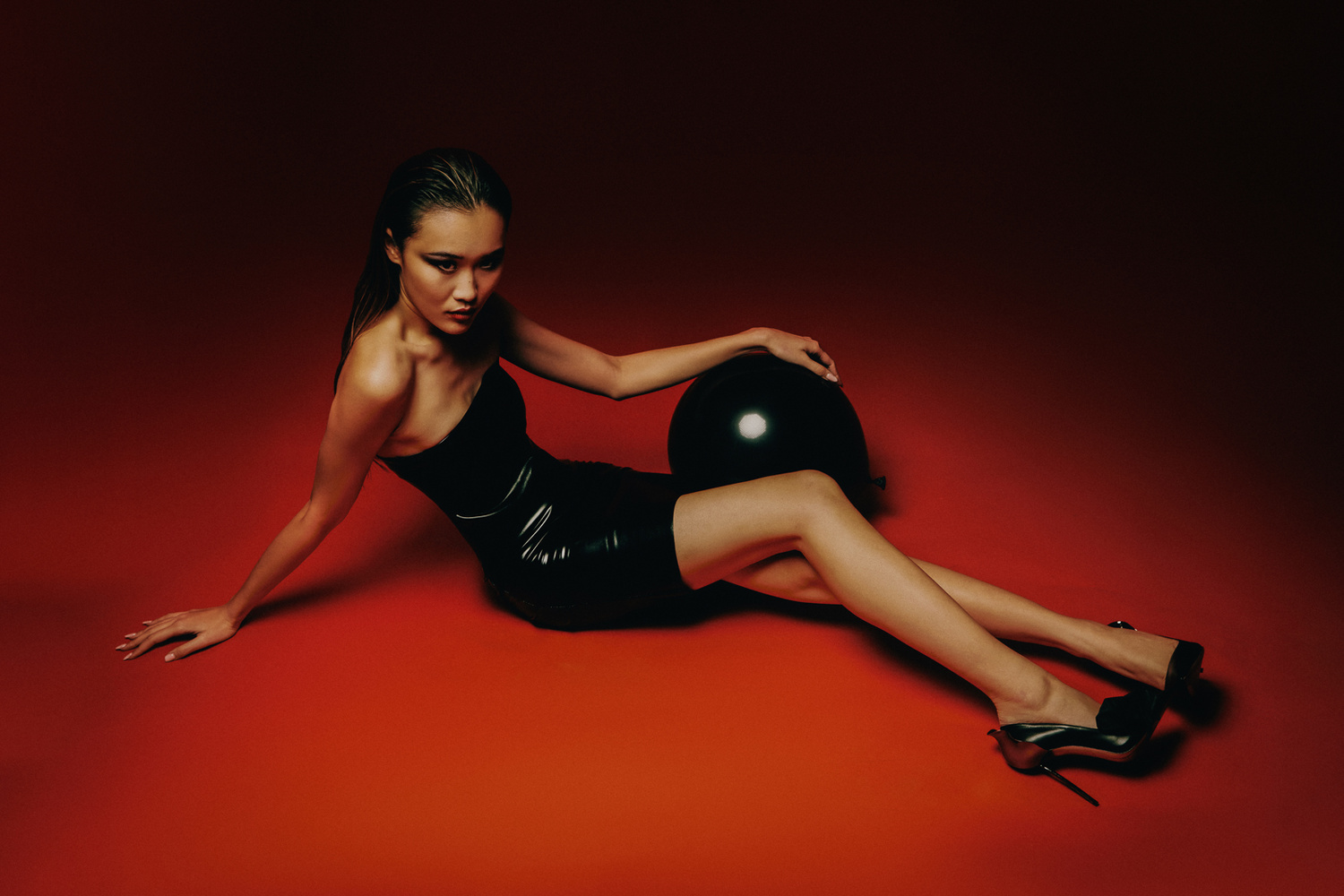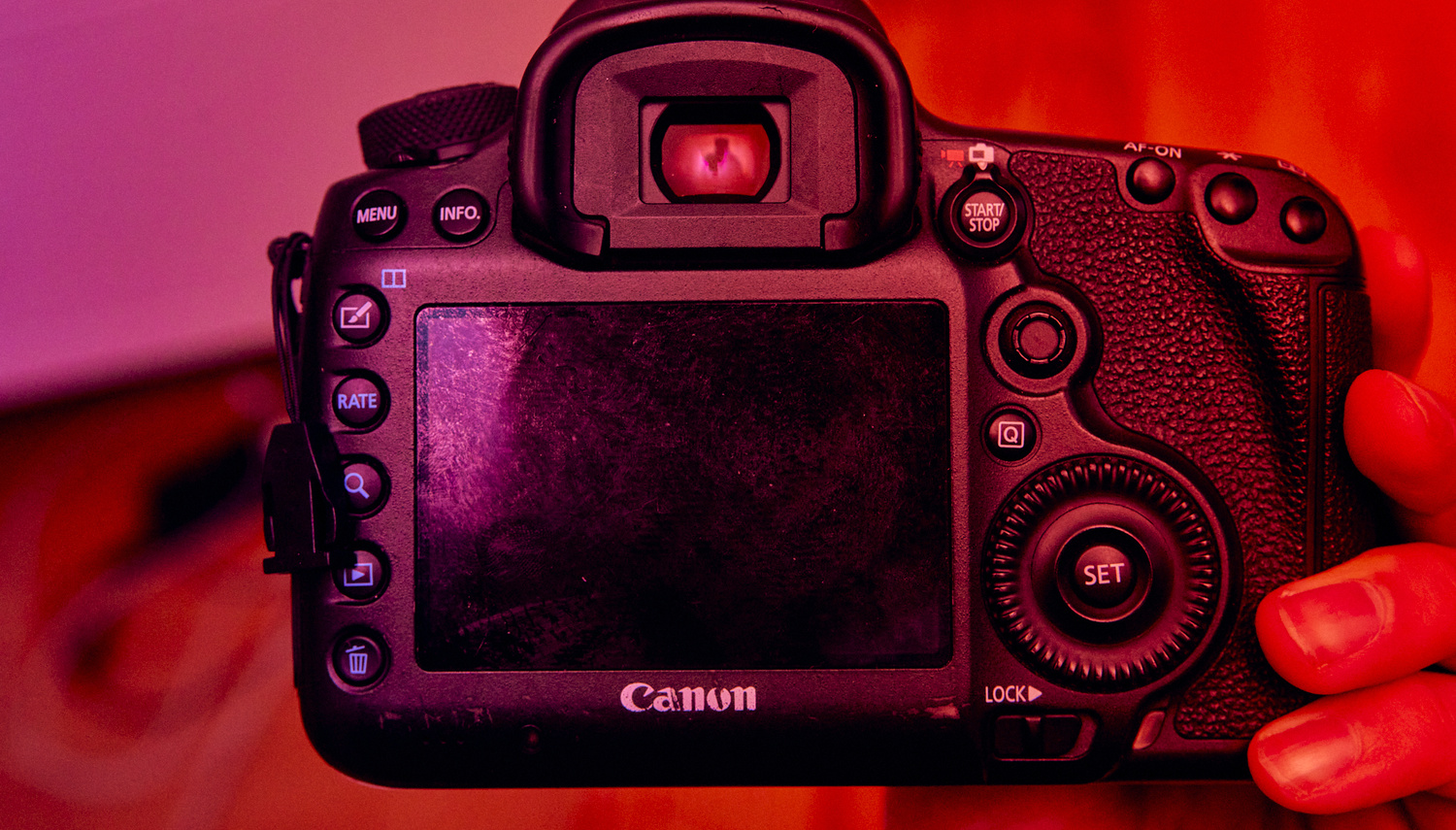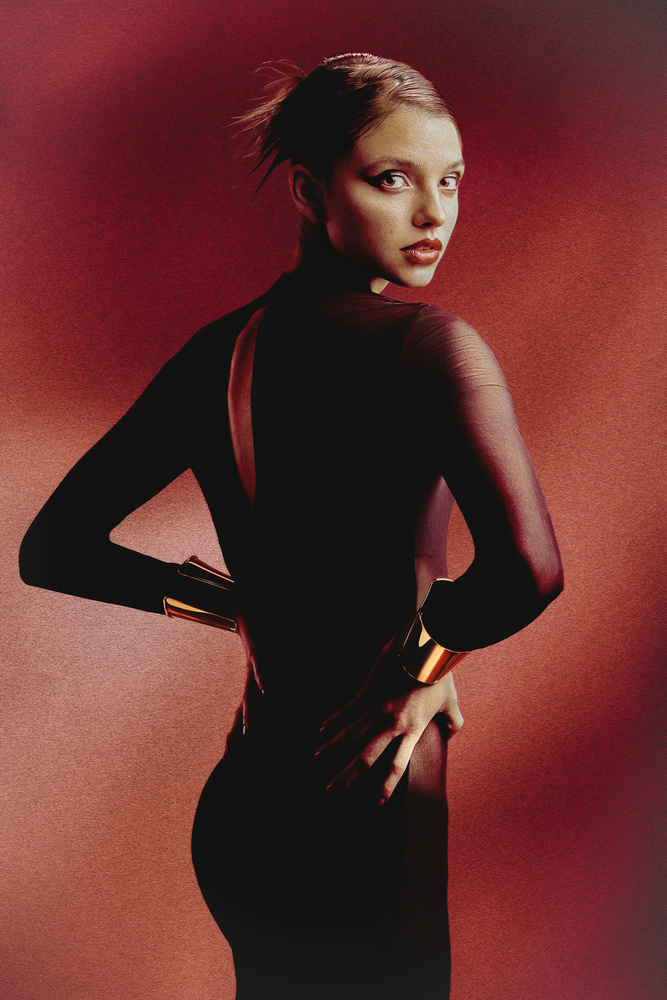When I was looking for a camera that could shoot higher resolution than my Canon 5D Mark IV, I had three options: Phase One, Canon 5DD, or mirrorless. I ended up getting the Canon 5Ds, and after using it for a bunch of work, here are my long-term thoughts.
Introduction
When I initially faced the problem of needing a higher-resolution camera, I was tempted to go for a medium format system and enjoy all the benefits it would bring. After all, an old Phase One 645 with a P-series back can be easily bought for only a little bit more. The dilemma was huge, and after careful consideration, I bought the Canon 5DS.
This camera does not need an introduction. It is an iconic piece of gear that photographers all around the world have used for almost any genre of work where high resolution was a priority. The colors are rich, the resolution high, and the autofocus mediocre. In this review, we will take a closer look at the Canon 5DS and see if it fits a modern professional's workflow.
Sensor Quality
This is one of the best sensors Canon has ever made. I would argue it is one of the best full frame sensors ever put in a camera. It is the reason the camera exists in the first place. Canon’s goal was to make a studio camera that would replace their aging Canon 1Ds Mark III. The “s” in the name stands for studio, which implies that this camera is aimed primarily at still life, fashion, portrait, and food photographers. It is best used in a controlled environment. The sensor is capable of producing stunning detail, but only in an environment where you do not have to push ISO. With great megapixel counts come poor low-light performance.

The 50.6-megapixel sensor in the camera is sensational. It is capable of capturing detailed images with rich colors and sharpness. This makes the camera ideal for the most demanding of jobs. The dynamic range is quite impressive as well, allowing the files to be rich in color and depth. Unfortunately, the ISO range is pretty bad, and the camera’s images are practically unusable beyond ISO 1,600. The range goes from ISO 100-6,400 and is expandable to 50-12,800. This is not the camera to use in challenging light conditions. This is a camera for those situations when you can either have a tripod or strobes filling in the gaps.
Focusing
Going from the biggest pro of the camera to the biggest con. On paper, this camera has the same autofocus system as the Canon 5D Mark III. Indeed, 61 AF points, 41 of which are cross-type, might give you the confidence that you can get extremely accurate and sharp images every time. However, the confidence would be false.
You see, with great resolution comes great responsibility. The sad truth is that even if your camera nailed focus, the slightest movement in the subject will render that useless. I rarely, if ever, use the Canon 5DS in situations where I am not sure about focusing the camera. It is best used with a stopped-down aperture and a subject that does not move too much. I take a lot of frames and make sure to listen for the beep before photographing to make sure that the focus has locked on. With a resolution so high, even the smallest imperfections are visible in the picture.
Long-term Reliability
I care a lot about reliability for the sole reason of hating to buy or replace equipment. The gear I buy has to be reliable enough to be used for multiple productions a week for at least a few years (in the case of a camera). Just like every professional camera Canon makes, this one is made from a rugged magnesium alloy, which makes it both lightweight and durable. The camera is weather-sealed, which I personally had the pleasure of testing under pouring rain. The dials are quite robustly designed, and the camera only shows some signs of wear when it comes to the rubber padding around the grip. Although not nice, it is expected from a device that is used weekly. My shutter is nearing the dreaded 150,000 cycles mark; however, the camera seems to be just fine. I have yet to see how many actuations it will actually have before I have to replace it. The Canon 5DS is a reliable camera that is made for professional photographers. If I could only bring one body to a shoot, I would have no problems with taking this one.

Obvious Drawbacks
So far, we have been praising the camera, but let's take a look at some of the things that make it not so good. First and foremost, it has to be the sheer skill required to make use of the camera's resolution. At first, my results with the 5DS were rubbish because I did not understand the fundamentals of using such an advanced camera. The focus has to be perfect, as well as the subject more or less stationary. It's better to use flash to freeze the motion. My best results with the Canon 5DS were in situations where there was little movement in the subject, high-power flash was used, and the aperture was stopped down. It's not too hard, but it does take some getting used to. The camera is not a video camera; the 5DS is a pure stills camera. I tried shooting b-roll on this, and it ended up looking mediocre, almost unusable. If you are planning to do any kind of video while also wanting to capture high-resolution stills, look in the direction of the Canon EOS R5.

What I Liked
- Sensor quality
- Dynamic range
- High resolution
What Could Be Improved
- Focusing
- Video features
- ISO performance
Closing Thoughts
Overall, the Canon 5DS is a solid performer that is as good of an addition to your arsenal as it would've been when it was released. If you are a photographer who is looking to capture stills of the highest quality, this camera is for you. I use my Canon 5DS on the most demanding of jobs when top image quality is required. This is the camera on which I have shot some of my best work. This is also the camera I use on editorial shoots and whenever I want to get a medium format feeling. Every image I take with this camera feels a little different. The sound of the shutter is a little slower, and the images feel more special.







I remember when the 5DS rolled out. I was working primarily as a digital tech, so I had seen just about everything under the sun.
The 5DS did not have fantastic image quality then, and it definitely doesn't now.
I was tech'ing alot of D800's and D810's at the time, and I remember the first time we (myself and other digi's) all saw files from the 5DS on our sets, and in the big group text chain on seemingly the same day, were like "WTF is wrong with 5DS files?".
I've never seen a camera with a chip so big, with such poor dynamic range and lack of clarity in the shadows as the 5DS when shooting at base ISO. It looks broken at ISO 100 it's so noisy.
I know one photog who sold hers after a week and went back to her 5D3's because when she was pushing shadows, they were cleaner files.
Probably the worst professional camera Canon's ever made, short of the 1Dmk3 (that camera was a disaster).
Come to think of it, I haven't seen a 5DS on set in.. 7 years? I don't even know anyone who shoots with one, and I'm well connected in my market. Here on the west coast, -virtually everyone- shoots Canon.
I had the 5Ds and I agree about the shadows. My 5Dii actually had cleaner shadows. However, the camera was fantastic and I just had to bracket just in case I needed shadow details to be edited in. I switched to the Sony a7rii back then and never looked back. More so for the ergo like flip screen, EVF, etc. Editing a friend's D800 files (Sony sensor) helped influenced my decision.
100% that's the main reason Sony has a foothold in the professional market. People saw the file malleability and were like "wooahahhh"
That said, the only people I know who shoot Sony professionally, are architectural and studio shooters adapting Canon TSE's. It's the cheapest way to 60MP with movements.
I've known about half a dozen who experimented with it, but they all ended up back with Canon because of small stuff that Camera Reviewers on YouTube would never experience.
Things like:
A completely jank hotshoe making equipment rentals a nightmare
Horrific Pro Services (I've heard this has gotten better though)
Poor Build Quality when shooting in the elements
Lack of focus and camera control in Capture One when in Live View (This actually makes it a non-starter system for anyone shooting ecomm in the studio)
Lack of TSE's for product and architecture shooters
Jank RAW files with baked in visible compression (but without the file size advantage)
60MP and SD CARDS...?!?!
Weird color, especially when you're on a set with multiple shooters and your digitech's have to match color between shooters to match a spec.
I totally get why Sony's are so popular with amateurs, it's made for people who shoot to card and care more about specs, "magic AF modes" that look really cool in the viewfinder, and don't want to lug a pro-sized body because they wanna take it for a walk.
But when you get down to brass tax and you need to show up at a 6am sunrise calltime, on location out of town, with rented G&E to get the job done at a real-life production level, they're **woefully** inadequate.
Nice article Illya. I like reading these older gear reviews.
I am also a 5Ds user. It's a fantastic camera and I can add two plus points to your article.
1) There is still a great used market for accessories and lenses.
2) The battery lasts forever when you shoot stills. As a hiker, this is really important as I don't want
to lug around spare batteries when I don't have to.
Yes, it does have some faults, but in the end you can always work around those.
Hi Illya Ovchar
I went for the 5DsR myself. Just added a 2nd one to the kit.
I prefer the files from the 5DsR over the 5DIV myself. They are a great camera capable of professional work for many years to come.
My only gripe with them is they can be a tad slow compared to the 5DIV but other wise great cameras. I shoot weddings and event as a 2nd shooter for a friend and you can feel the difference in speed between the 5DsR / 5DIV.
"The sensor is capable of producing stunning detail, but only in an environment where you do not have to push ISO."
So true. I finally got tired of trying to get more shadow detail and seeing "patterned" noise that I made the switch to the Sony a7RIV. I miss the ergonomics of Canon but I now have files that can really be pushed.
I'm a 5DSR user myself and have been for several years. There's a few points I don't understand here.
A) Focusing is not good. I don't know why the author says this. I had a 7D mk II in previous years and it was touted as having excellent focusing - on par with the 1DX series - but in a crop body. 5DSR has the same focusing system but half the framerate - which is why people were saying it was slower (not the focusing itself). I shoot with the focus beep disabled, handheld, wide apertures and have never had a problem nailing focus. Perhaps looking into the focus tracking options in the camera menu is called for? Rudy has a good talk about it on Youtube.
B) ISO performance is bad. It's ok at worst. 3200 is totally usable. I've never gone above 3200 or been in a situation where it was needed that I can remember. Scale a 50MP image with severe noise down to size for 99% of use cases and all noise disappears. I've printed 3200 ISO images produced from this camera and they look great.
Otherwise, nice to see the 5DS & R seeing some love after all these years.
Hello everyone.
Unfortunately, Canon has disappointed many amateur and especially professional photographers who use this model. It could very easily with a new firmware destroy the dynamic range and focus. Mainly the dynamic range for high iso. We see older models give better results and other companies have done this with their bad and smaller sensors. I know many photographers who have chosen the R5 and they are not happy that Canon does not take care of this model which cost quite a lot along with a set of lenses. We saw that a new firmware was created for Canon 1dx Mark III which added functions of Canon R3. So easy and so simple. The same does not happen here. Nikon D800 and Nikon D850 are still adding new firmware. We feel that while we have invested so much money to have some 3 Canon 5DSRs along with expensive lenses the company has abandoned us. Kinda like and I know it's going to sound bad, cheated customers. I hope that Canon will rethink it and make a newer firmware that will utilize the power of this very powerful sensor. It's too easy for them. So that we can use the older model together with the R5. Otherwise, switching to Nikon and Sony models is a one-way street for many photographers, especially professionals. Unfortunately.
I know this in an aged review but thanks for the shout out to the 5DS, a misunderstood and maligned camera but one hell of a beast that creates some phenomenally rich images. I'm still using a pair of 5DS's for wedding work as a second shooter (30-40 shoots/yr). Yes, unusual choice of camera for weddings and I'm definitely "doing it the hard way", perhaps a lower hit rate than colleagues using R6's or 5DIV's but the images I make with the 5DS's (the hits at least) really satisfy and more importantly make the bride and groom happy (as I've heard from various feedbacks).
I do think of getting a Mark IV though; not excited about the R6 and the R5 is bokoo bucks for a part time wedding shooter IMO.
Those who complain about shadows..do you even print your photos? What are you looking for in the shadows anyways? Gnats? Go print them see if anyone cares about shadows...jeez
I bought the 5Ds to go with my 5D Mkiii and 1V, love it. I shoot landscapes mostly with it on a tripod however I've shot at race tracks and the Pacific Air Show and it held up fine. I don't use it all of the time but am more than happy with it.